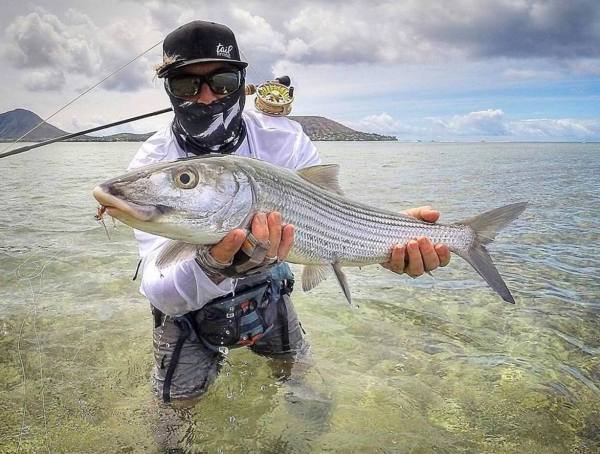Buying the best fly you can afford sounds great, but that doesn't mean it's a good fly rod.
Considering those of us that come from fishing backgrounds, we trust our knowledge and skills as fishermen to catch fish more than we trust our equipment, however, it's a two fold advantage when you get down to it. Sure, you have to know where the fish are and the right techniques, but being able to reach and fight them is the other half of the battle. Really, a lot of this comes down to the rod. So what makes a good fly rod? Well, here's a good idea.
It's no secret that fly fishing is an expensive art. A lot of marketing goes into it from major companies to make sure you know how great your expensive rod is, however, is it really that good compared to others? Well, maybe, but probably not. More money doesn't mean more quality or more fish. It just means more money.

Image via Walton Rods team member, Bridget Fabel
The famed Gary Loomis wrote an article about rod breakage and the myths that surround graphite rods. It was refreshing to read the truth behind the marketing for once. For example, IM6, IM7, or IM8 doesn't really mean anything. It's just two letters with a number that a graphite manufacturer uses to identify their products. That's it. Any company that is trying to sell you on high IM blanks is trying to sell you, and a lot fall for it.
Modulus Rating
One aspect of a fly rod you should take into consideration is the modulus strength. The higher the modulus, the lighter the rod, and the more energy and performance the rod has. Unfortunatley, the higher the cost as well. It really comes down to action and style. If you want a less responsive rod, look for a lower modulus. If you want tighter casts and longer distances, perhaps the higher modulus rod might do the trick.

Image via David Lee Winters, Hawaiian fishing guide
However, with all that being said, fly fishing is a popular sports but pales in comparison to traditional fishing in North America. Many companies have to charge hundreds more than their rods are worth for lesser equipment to make ends meet. This is where the marketing games come into play. If you are looking for a good fly rod for you, just pay attention to the warranty, modulus rating, quality of components, and where it was made. Otherwise, all fly rods are pretty much the same with subtle differences that can run the end consumer hundreds of more dollars.
Marketing Games
The information above is normally pretty easy to find, but if it isn't, the company doesn't want you to know. Why? Well, marketing games. If a low modulus rod is retailing for more than a higher modulus rod, something is wrong there. If the components suck, but yet the price is high, again, it doesn't pass the smell test. Was it made in China? 90% of the fly fishing industry is. Guess what? That Chinese rod costs a minimal fraction of the asking price. Again, you got sold.

Image via Walton Rods team member, Sally Schmidt
It's for this reason I'm such a fan of Walton Rods; a fly fishing company based on the best components they can get for a price that actually reflects the real cost of the rod, not marketing games. All Walton rods are handcrafted in the USA by Americans. Their components are what you would find on a high end rod in any fly shop in America. All rods have a no questions asked warranty. Oh yeah, and their first series of rods feature a 68 million modulus graphite blank, all for $295. It's all listed on their website and the transparency is refreshing.
It's pretty hard to beat if you ask me. However, I'm a little biased.
https://rumble.com/embed/u7gve.v3tsdx/
NEXT: RARE LEOPARD REDFISH CAUGHT IN LOUISIANA




